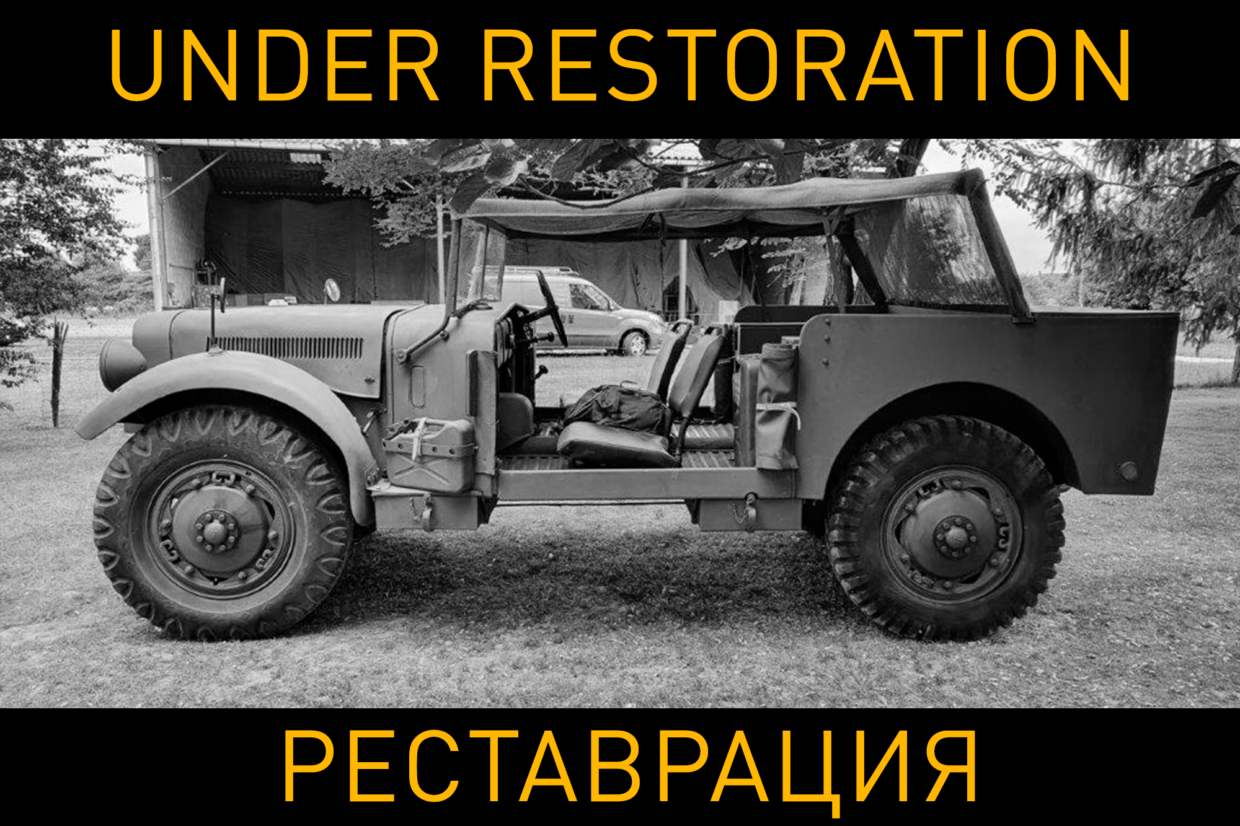This entry is also available in: Russian Chinese (Traditional)
The Latil factory became known in the world of four-wheel drive machines for its TAR tractors. In 1911, the Marseille engineer Frederic Auguste Joseph Georges Latil (1878-1961) designed and built the first commercially successful four-wheel drive machine that interested the military and from 1913 the TAR (Tracteur d’Artillerie Roulante) was supplied to the French army. Continuing to develop four-wheel drive, in 1914 Latil reorganized his company in Suren, called “Compagnie des automobiles industrielles Latil”.
The company was transformed into a joint-stock company “Automobiles industriels Latil” on November 22, 1928 and its shares began to trade on the Paris Stock Exchange. Further expansion in the four-wheel-drive market led to the fact that from 1930 Latil produced licensed versions of Gardner diesel engines, and from 1932 to 1937, Latil tractors under the brand name Traulier were produced in the UK under license by Shelvoke et Drewry. Since 1935, the company began to offer heavier 6-wheelers with a payload up to 10 tons.
However, French army officials needed a “small tractor” to transport the 1934 model 25mm anti-tank gun, heavy equipment was not suitable. As we said in the Laffly V15T article, the only vehicle that could do such a job in 1934 was a 1931 Renault UE model tracked armored personnel carrier, and it was not suitable for the conditions of the task.
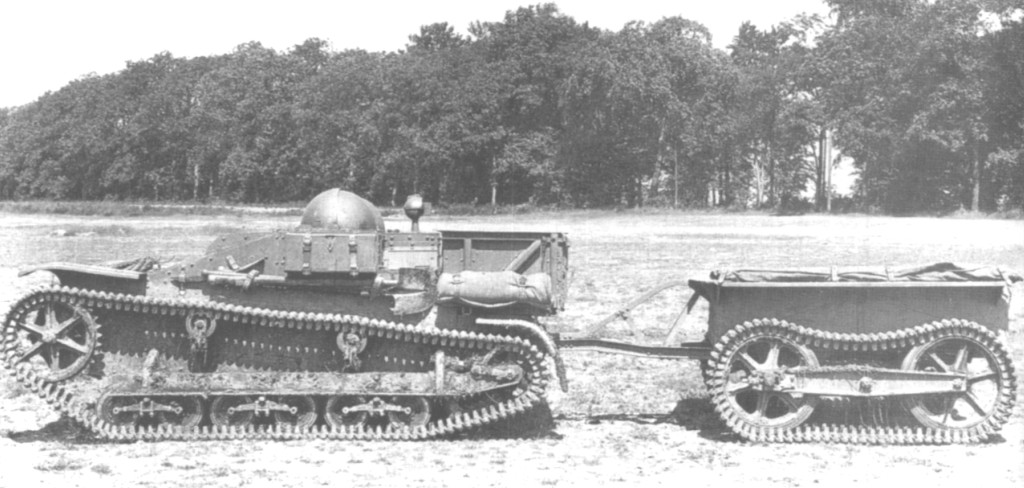
The army needed several types of light tractors:
- to support anti-tank motorized units, which were paired with fast tractors with a very specific cargo platform layout, and
- to integrate with large marching battalions, which may well have been tracked.
- For the second category, they eventually chose the small, well-designed Unic TU1 half-track tractor, which met most infantry needs with its versatility.
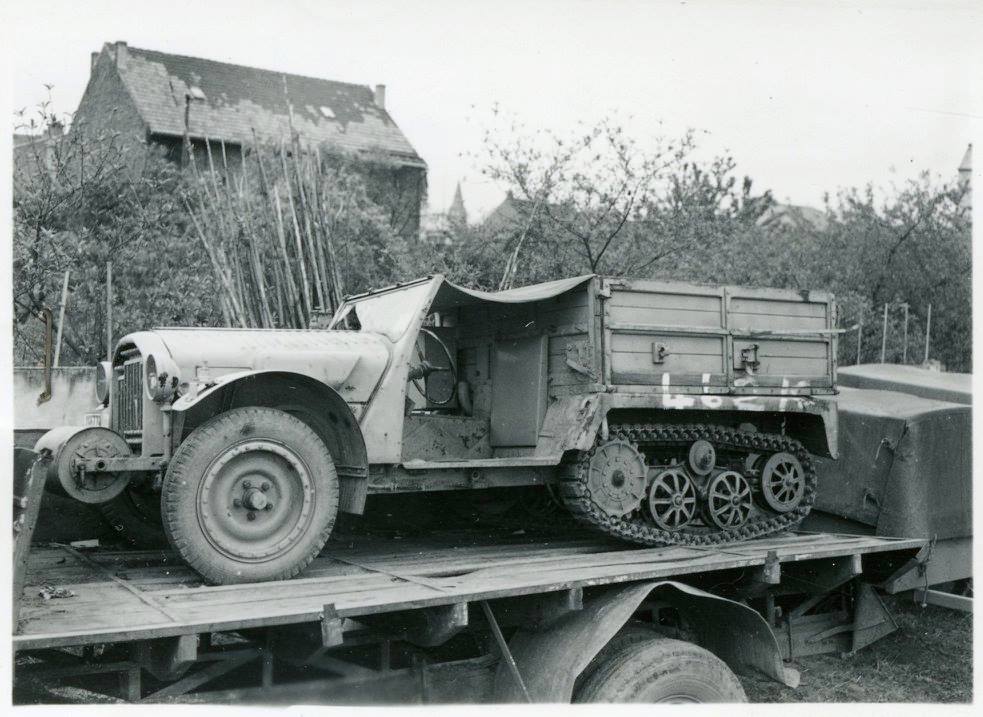
As for the fast “tractor,” it had to meet the following requirements: four-wheel drive, capable of speeds up to 60 km/h, accommodating five people, including the driver, in full combat gear, and 250 kg of ammunition.
The testing program began on July 6, 1938, with the Laffly V15T artillery tractor being the first to enter the program. The Bernard TT 4 prototype underwent similar tests.
The Laffly V15 T won the hearts of the cavalry, and the Latil M7 T1 became a favorite of the infantry.
Latil prototype in testing
The Latil prototype of the fast “tractor” was presented at Vincennes in late 1938. Compared to its main competitor, the V15T, which had just received commission approval, the M7 T1 was “a little taller and a little lighter, but its wheelbase was much larger. The body also accommodated five seats, but all facing the road: three in the front (the middle seat is slightly oriented to the left to provide an acceptable passenger leg position) and a rear “sofa” with two seats.
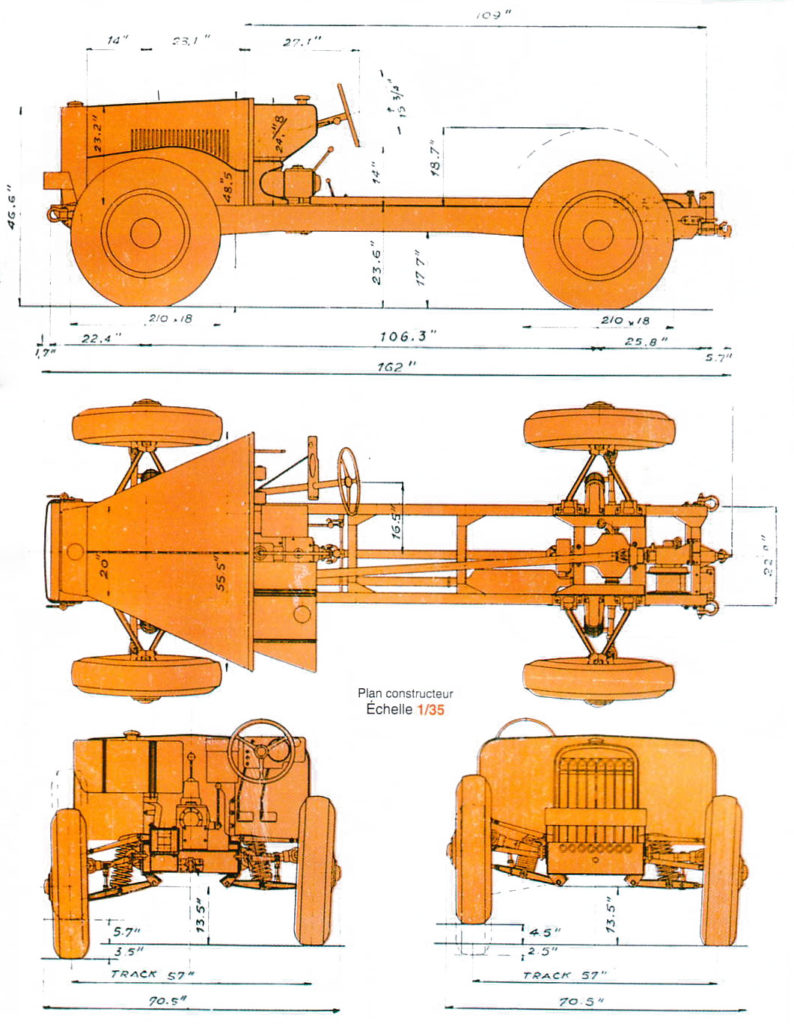
After undergoing the same testing program as its immediate predecessor, the new vehicle received mixed reviews: “The Latil M7 T1 tractor is very similar in performance and ease of use to the Laffly V 15 T, but shows worse off-road performance, although with lower fuel consumption. Although, the ‘overall concept’ is theoretically better than that of Laffly vehicles.” (CEMA Vincennes, March 16, 1939)
So what is the “theoretically best overall concept”? To answer this question, we will use excerpts from the automotive magazine “Traite de Technique”, which based its conclusions on the CEMA Vincennes Commission report: “Latil off-road tractors are produced without using foreign components; they are four-wheel drive, like Laffly vehicles. The front-wheel-drive is optional […] Compared to the Laffly, the Latil machines have the following fundamental differences: the suspension is designed so that the wheels move while remaining parallel to themselves. This solution protects the tires but is a big disadvantage in terms of increasing the number of joints: four joints per wheel instead of one; two universal joints, one of which is sliding for the shaft that drives the wheels. There is a differential with an axle locking device”.
The magazine concluded that the Latil M7 T1 is “much more vulnerable [than the Laffly V 15 T] to mud because of the many extra joints and connections required to organize the wheel suspension. “Finally, the winch with which it [the Latil M7 T1] is equipped” is virtually useless: it is too underpowered, and the vehicle has no room to accommodate rigging.
First orders and… Nothing
The infantry leadership, without waiting for the end of the prototype tests, took a keen interest in the Latil “tractor”, which they specified by asking for 175 pieces for the seven motorized regiments on February 3, 1939. At the same time, the leadership of the engineering regiments asked for 310 examples with a cable unwinder installed in the trailer. But tests of the Latil M7 T1 prototype had not yet been completed, and “these orders should not be negotiated with the manufacturer until final acceptance by the EMA” (4 February 1939).
The Vincennes Commission issued a favorable verdict on March 16. Latil’s management assumed that the first deliveries of the M7 T1 under government orders would begin on September 10, 1939. The estimate was for production of 70 per month by March 1940 and completion of the first 485 tractors by the end of June 1940. However, the first orders for 400 tractors for 25mm guns were not placed until September 17, and the expected volumes reached 100 per month.
Even more ambitious was the plan scheduled for April 24, 1940: starting in January 1941, the Latil M7 T1 was to remain the only vehicle in the 25mm four-wheel-drive artillery category and the monthly production was to increase from 100 to 300 pieces thanks to the support of the Simca factory. The latter should provide half of the production. Unfortunately, this big project was not destined to come true.
Mass orders in September 1939 came at a time when the Syrén plant, like the entire French industry, suddenly found itself totally disorganized, arising from a serious labor shortage that was subject to mobilization, and from difficulties in supplying special steels. The difficulties reached such proportions that the first M7 T1 series was first postponed to December 1939, then to January 1940, and, in fact, the first 49 tractors were not delivered until March 1940. In April another 44 machines came out. The first 72 Latil M7T1 “tractors,” as originally planned, were not allocated to CDAC for motorized regiments, but were intended on a temporary basis for vehicle companies of DCR fighter battalions.
By the end of May, another 48 “tractors” had been delivered. Of the 175 machines of the first order (contract No. 96 214 D/P) 34 remained to be delivered, of which 20 were nearly finished, 5 were in the body, 6 required modification, and 3 were in final testing (status as of 31 May 1940). Before the factory was evacuated on 12 June, assembly was probably still going on, given that the 25mm gun version had absolute priority. It may have been the only one to actually see the light of day as a production model, despite a large number of prototypes built the year before.
In June 1940, the Latil factory in Suren was arrested as a Jewish factory. There is no exact information about the number of tractors produced for Germany, but it seems that the production volume exceeded several dozen units. That is, the Wehrmacht received not only those machines that remained on the production line at various stages of completion.
Indeed, if we turn to the list of known chassis numbers, it is clear that there is a “gap” of about 120 numbers between the last tractors, presumably completed before the evacuation of the factories in June 1940, and those produced after the liberation of France.
Resumption of production
After the liberation of France in 1944, the provisional government of the French Republic issued a series of emergency contracts for the production of machinery of the 1940 model. Of course, four years of war had not passed without a trace: industry in the liberated regions was in a deplorable state, both because of Allied bombing and because of the seizure of machines exploited by the Germans and resistance sabotage. And, of course, there was a shortage of raw materials for production, hard to find. But there was a pressing national need: the Americans agreed to equip and maintain only the eight French divisions called for in the reduced Anfa plan, while the French National Defense Committee adopted a constitution in late 1943 that required the army to consist of 36 divisions. So in the fall of 1944, the French war industry was revived as much as possible. The first results appeared before the end of the conflict, but most of them would manifest themselves in the postwar period.

It was in this context that Latil resumed production of the M7 T1 tractor as a light tractor for 25mm guns. But since this gun was no longer in use, the 1944 Latil “little tractor” was preparing to tow heavier equipment. Due to “minor design changes” that were never clarified, the vehicle adopted in 1939 for a moderate towing load of 500 kg, six years later claimed to be able to pull five (!) times as much – 2500 kg. The truck was designed to pull a new trailer with a curb weight of 2 tons.
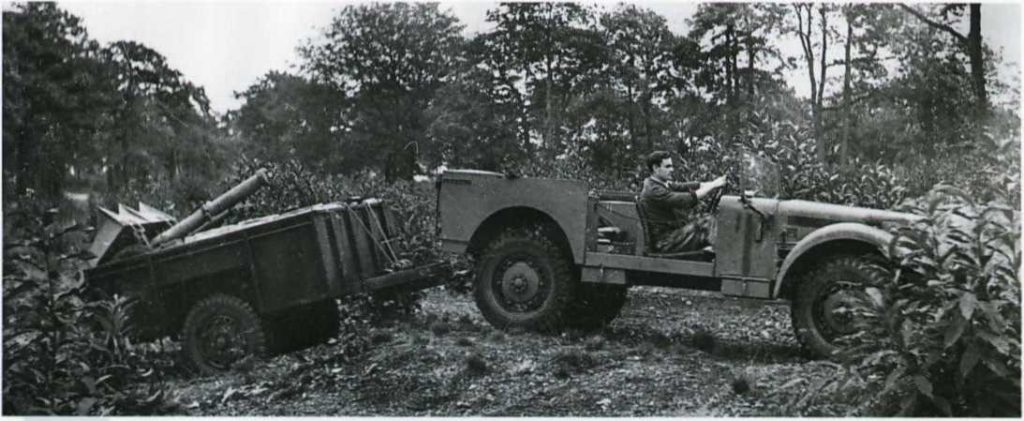
Equipped with a light winch, the Latil RCB 2 trailer was apparently intended to carry mortar and ammunition, but the M7 T1 was also used after the war to tow various non-specialized transport trailers weighing up to 2.5 tons. After the Army upgraded several hundred M7 T1s in its possession, these vehicles ended up in civilian hands, where they worked as forestry tractors or firefighting and towing vehicles.
Distinctive features of the 1944 model tractors are the hood, which has 37 slots instead of 36, and its lower neckline is less curved, as well as the Latil badge on the radiator, which has disappeared altogether. Other changes would appear, but gradually, through successive updates to the cars produced. It appears that from 1945 the puncture-proof tires were replaced by tires with regular chambers, which led to the installation of a spare tire in the right rear of the car – this refinement first appeared on the cars used by the Wehrmacht during the war.
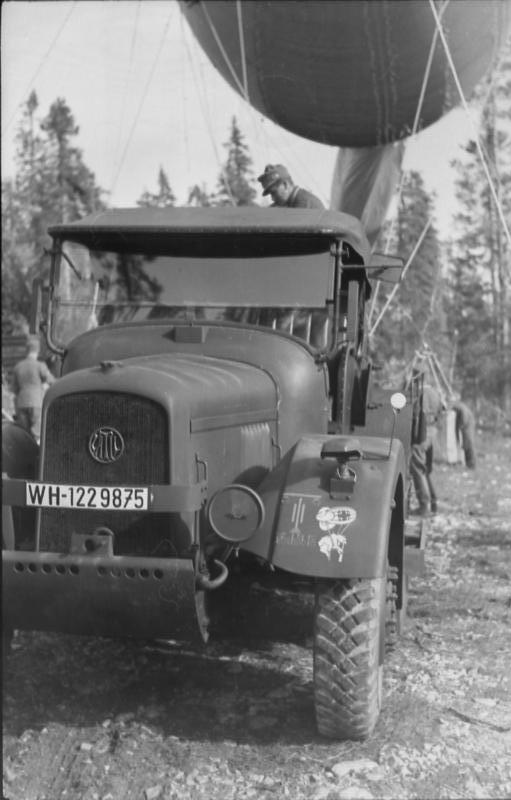
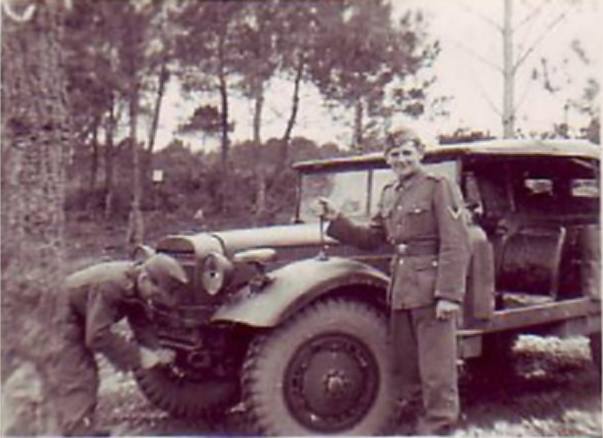
A little later, probably in 1946, the machines underwent deeper modifications:
- A bumper was added, mounted on two supports on the sides of the frame and on the radiator. This led to the abandonment of the radiator guard strip.
- The eight-cell radiator was replaced with a regular radiator.
- In addition, the hood gets 8 additional air vents: a series of 4 or 5 holes in the front and a series of 4 or 3 holes in the bottom row at the rear.
Conceived as a light artillery tractor that was re-launched as a heavy 2.5-ton tractor, the Latil M7 T1 ends its career as an off-road communications vehicle, but overly oversized and equipped with outdated mechanicals. Thus ends the story of the “little tractor” Latil, which willed to leave a much smaller mark on history than its “father” Georges Latil had hoped.
Technical Specifications
| Manufacturer | Automobiles industriels Latil, Suren, France | .
| Years of manufacture | 1939 – 1949 | .
| Number, pcs | 1,155 | .
| Cost | |
| Cost in current prices | .. |
| MOTOR AND TRANSMISSION | .|
| Type | 4-cylinder, in-line, bottom-valve |
| Engine displacement, cm3 | 2,724 | .
| Piston diameter and stroke, mm | 85 x 120 | Piston stroke mm |
| Power | 50 hp at 2200 rpm |
| ignition | .electric starter |
| Carburetor | . |
| Accumulator | .|
| Clutch | .|
| Gearbox | 4-speed + reverse |
| Wheelbase and wheelbase | .|
| Frame type | .. |
| Front suspension | independent, spring |
| Rear suspension | independent, spring |
| brakes | drums on all wheels |
| Wheel dimensions | |
| DIMENSIONS | .|
| Length, mm |
4 100
|
| Width, mm |
1 800
|
| Height, mm |
1800
|
| Wheelbase, mm |
2 700
|
| Clearance, mm |
320
|
| Mass, kg |
2 450
|
| Petrol tank capacity, l |
65
|
| Maximum speed, km/h |
60
|
| Range, km | 320 |
*- Data based on the results of the measurement on the museum “Motorworld by V. Sheyanov”.





